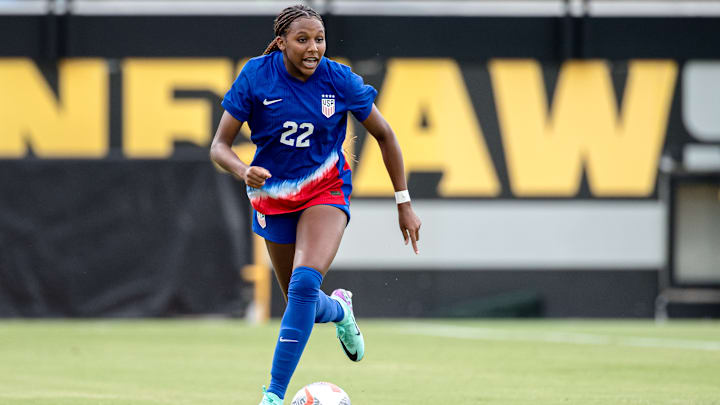The USWNT head coach, Katie Schoepfer, unveiled the squad for the 2024 FIFA U-17 Women's World Cup and gave a glimpse into the promising future of American women's soccer. The undoubted standout of the 21-player list selected is the inclusion of four professional players who are already competing in the NWSL-a first at this age group. Kennedy Fuller, Melanie Barcenas, Kimmi Ascanio, and Ainsley McCammon represent a new generation looking to quite literally change the game.
Follow MLS Multiplex on X (Twitter).
A New Era in U.S. Women's Soccer
Having these pros on the roster means the U-17s have reached new ground. Fuller, Barcenas, Ascanio, and McCammon aren't just youngsters with promise-they already have high-level playing experience. These players represent a leap in the quality of talent development, especially as the NWSL, the nation's top women's soccer league, continues to grow as a platform for nurturing young talent.
Take Kennedy Fuller, for example: The 17-year-old has managed 966 minutes in 18 matches with Angel City FC. If all that time on the pitch weren't enough, she's found the back of the net in one of the most competitive leagues in the world-a sign she's already accustomed to pressure. Then there's Melanie Barcenas, the other rising star, who scored her first professional goal in the NWSL against the Portland Thorns. What they've done to date in the NWSL will translate literally to the U-17 World Cup in terms of intensity and a skillset that few other teams will be able to compete with.

The Group of Death and Early Challenges
A challenging opener indeed, as the U.S. U-17 team starts off against reigning champions Spain. This opening match in Group B on October 16 will surely be a clash of the titans. A possession-based Spain, an adherent to midfield control, will surely try the mettle of the U.S. defense and playmaking abilities.
Add to that Colombia and South Korea, its opponents on October 19 and 22, respectively, both of whom pose a different kind of problem-one with its trademark speed and unpredictability in attack, the other with tactical discipline and a solid back, rapid transition.
This "group of death" will be the gold nugget of an opportunity for Schoepfer to see precisely how her players have been developing, especially the ones already inured to the best competition. Experience going into the squad from Fuller, Barcenas, Ascanio, and McCammon can be exactly what sees them through this tough phase in establishing the U.S. as one of the favorites of this tournament.
The Future of the U.S. U-17 Squad: How Experience and Youth Balance
Besides the professionals, the roster is fleshed out with athletes who have risen through the U.S. U-16 program. Of those, 14 helped the U.S. take the Concacaf U-17 title, while seven others made a late push to nail down their spots on the World Cup squad.
The combination of youth and experience in this squad, however, is a critical mix for its development, underlining versatility that could all make the difference in a high-intensity situation. Coach Schoepfer realizes well that, by leading this team, she stands at a privileged position to help develop these players for the future of the senior national team. As she said, "This is a once-in-a-lifetime experience to develop them as a person and player. The experience of representing the United States on the world's biggest stage at this age level will be an incredible challenge."
Tactical Structure and Youth Development
The rise of women's soccer within the U.S. is not an accident. The country has been gradually changing its youth development system, and that explains a lot of how such young players compete at the highest international levels. Professional players like Fuller, Barcenas, Ascanio, and McCammon were part of a youth national team-proof that the talent pipeline works.
This is also evidenced by the appointment of Katie Schoepfer as head coach; her philosophy centers on developing individually and as a team, which has clearly been evident since the qualifying rounds. The U.S. isn't just competitive but an emerging powerhouse that redefined what it means to be a U-17 national team.

A New Chapter for Women's Soccer
While the USWNT team is looking to repeat that World Cup title, this tournament also marks the end of an era. This will be the last U-17 Women's World Cup to feature 16 teams, with next year's format to be expanded to 24 teams and thus even more competitive. It's a move that promises to extend women's soccer's global reach, and the U.S. is better positioned than ever to meet this new chapter.
With four professional players, an undeniably talented generation, and a coaching structure that puts more emphasis on each as a growing person, the future of U.S. women's soccer is in a good place. Expectations are very high for the U-17 World Cup, and rightfully so-the world will be set to watch these stars, who even now can stake a claim on being the future.
